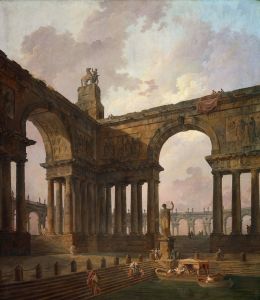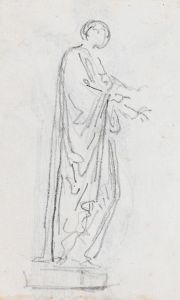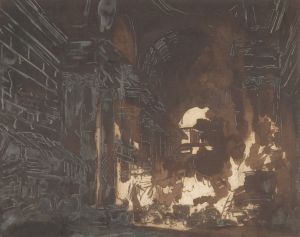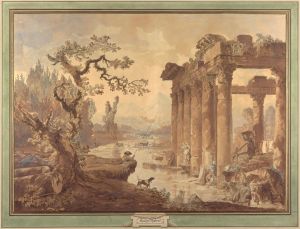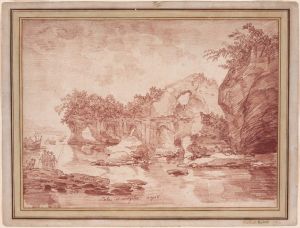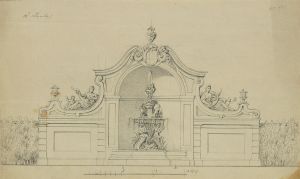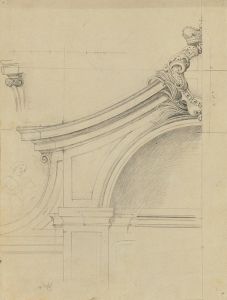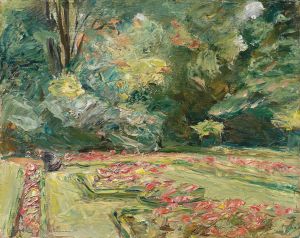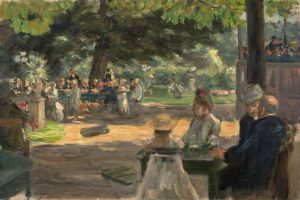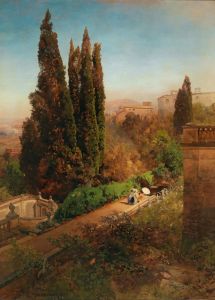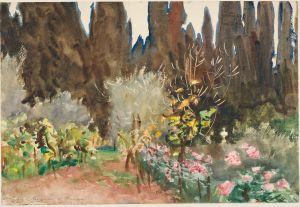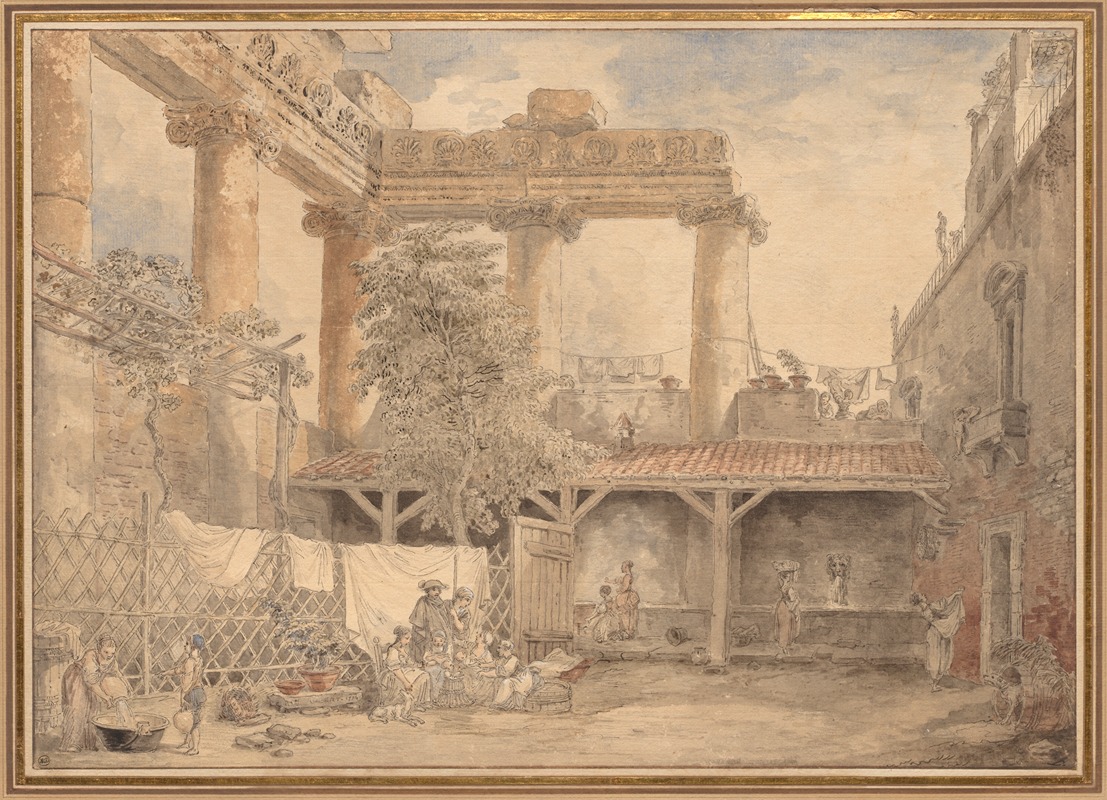
Roman Ruins, Villa Pamfili
A hand-painted replica of Hubert Robert’s masterpiece Roman Ruins, Villa Pamfili, meticulously crafted by professional artists to capture the true essence of the original. Each piece is created with museum-quality canvas and rare mineral pigments, carefully painted by experienced artists with delicate brushstrokes and rich, layered colors to perfectly recreate the texture of the original artwork. Unlike machine-printed reproductions, this hand-painted version brings the painting to life, infused with the artist’s emotions and skill in every stroke. Whether for personal collection or home decoration, it instantly elevates the artistic atmosphere of any space.
"Roman Ruins, Villa Pamfili" is a painting by the French artist Hubert Robert, renowned for his evocative landscapes and depictions of architectural ruins. Hubert Robert, born in 1733 and died in 1808, was a prominent figure in the 18th-century art world, particularly known for his fascination with the ruins of ancient Rome and his ability to blend reality with imagination in his works.
This particular painting, "Roman Ruins, Villa Pamfili," is a testament to Robert's skill in capturing the grandeur and decay of ancient structures. Villa Pamfili, located in Rome, was a significant inspiration for many artists of the time due to its historical and architectural significance. The villa itself, originally constructed in the 17th century, is surrounded by extensive gardens and is one of the largest landscaped public parks in Rome today, known as Villa Doria Pamphili.
In Robert's painting, the ruins are depicted with a romantic sensibility, characteristic of the 18th-century European fascination with the classical past. The artwork likely portrays a blend of real and imagined elements, a common practice in Robert's work, where he would often take artistic liberties to enhance the dramatic effect of the scene. His paintings are known for their atmospheric quality, achieved through the use of light and shadow, which imbues the ruins with a sense of timelessness and mystery.
Hubert Robert's interest in ruins was part of a broader cultural movement during the Enlightenment, where ruins were seen as symbols of the passage of time and the inevitable decline of human creations. This theme resonated with the intellectual currents of the period, which emphasized the study of history and the appreciation of ancient civilizations. Robert's work, including "Roman Ruins, Villa Pamfili," reflects these ideas, inviting viewers to contemplate the grandeur of the past and its impact on the present.
The painting is also notable for its composition and use of perspective, which draw the viewer's eye into the scene, creating a sense of depth and immersion. Robert's attention to detail in the depiction of architectural elements and the surrounding landscape demonstrates his deep understanding of both art and architecture. His ability to convey the texture of crumbling stone and the play of light on surfaces adds to the realism and allure of the painting.
"Roman Ruins, Villa Pamfili" is a fine example of Hubert Robert's work, showcasing his talent for merging historical accuracy with artistic imagination. The painting not only serves as a visual record of the ruins but also as a reflection of the 18th-century European fascination with antiquity and the romantic allure of decay. Through his art, Robert invites viewers to explore the intersection of history, art, and nature, capturing the enduring beauty of the past.





